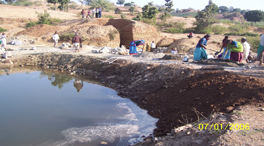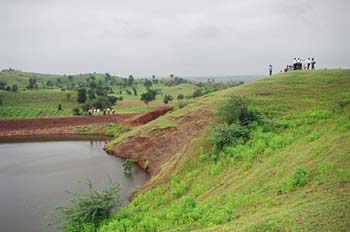Malawi economic monitor, February 2024
Watersheds play a crucial role in sustaining the ecosystem, biodiversity, wildlife, agriculture, and human population by serving as the natural resource base for all forms of life. These natural boundaries
Watersheds play a crucial role in sustaining the ecosystem, biodiversity, wildlife, agriculture, and human population by serving as the natural resource base for all forms of life. These natural boundaries
Nurpur: In order to explore possibilities of the Carbon Credit Project (CCP) in Kangra district a World Bank (WB) team visited a number of gram panchayats in Nurpur and Jawali subdivision last evening.

The National Rural Employment Guarantee Act (NREGA), notified on September 7, 2005, marked a paradigm shift from the previous waste employment programmes with its rights-based approach that makes the Government legally accountable for providing employment to those who demand it.
The performance of the artificial neural network (ANN) model, i.e. standard feed-forward neural network trained with Levenberg
Assessment of erosion status of watersheds is an essential prerequisite for Integrated Watershed Management (IWM). It not only assists in identifying the suitable soil and water conservation measures to arrest erosion and conserve water but also helps in devising best management practices (BMPs) to enhance biomass production in watersheds.
Wagarwadi watershed of Parbhani district falls under semi-arid tropics of basaltic terrain. The water balance components were analysed to find out the ground water recharge, which is the main input to the aquifer MODFLOW. Well characteristics like transmissivity and specific yield were determined by carrying out the pumping test.
The availability, development and management of ground water plays a vital role in the sustainable development of coastal regions. The difference between the recharge and discharge from the aquifer decides the level of water table. Water table generally rises during the monsoon as the rainfall infiltrates into the subsurface ground and the water table is lowered during summer.
National Watershed Development Programme for Rainfed Areas (NWDPRA) was taken up in a Shivalik foot hill watershed of Haryana, namely, Raipur Rani in Haryana during the XI five year plan. The Central Soil and Water Conservation Research and Training Institute, Research Centre Chandigarh conducted impact evaluation of the NWDPRA programme during 2005.
Water resources regime in Kumaon Himalaya is a product of its specific environmental conditions. Major river systems, lakes along with a plethora of streams and springs are the main sources of water in this region. In pre-colonial Kumaon, communities took pride in their water systems and the local communities had the right of ownership over the use of local natural resources.
Study was conducted on low cost earthen dam during 2003-2005 at the Central Horticultural Experiment Station, Vejalpur. The study indicated that, runoff water, harvested can be recycled which forms an integral part of successful horticulture fruit crops, during lean period.

This latest UNEP report systematically synthesises the close links between human well-being and ecosystem services through a number of rainwater harvesting cases. The cases are organised into thematic chapters addressing rainwater harvesting systems, their roles and their impacts.